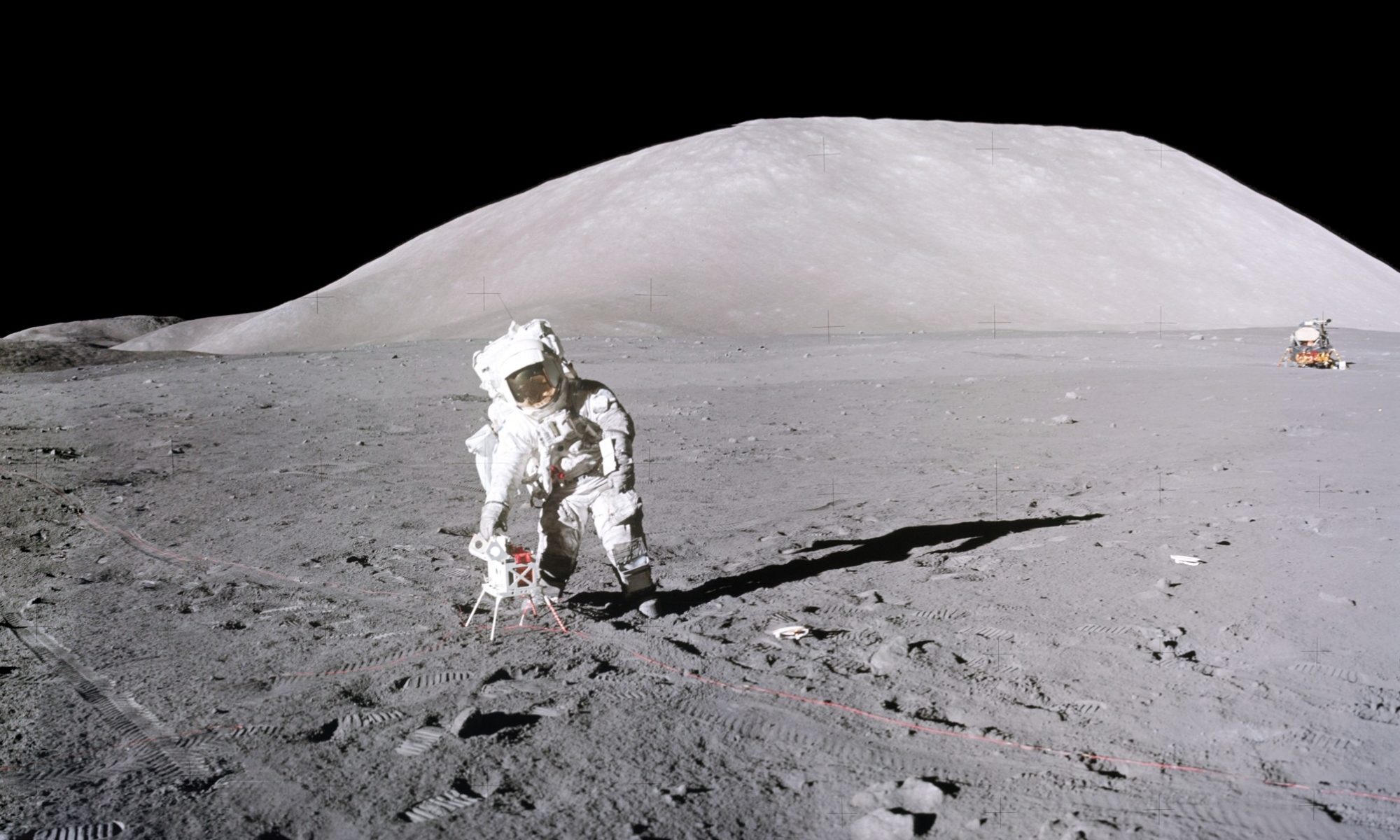 The contrast- and color-balanced version of NASA photo AS17-137-20990 taken by Gene Cernan of the trench dug by Harrison H. Schmitt through the orange surface area that he spotted from the LRV parked nearby on the rim of Shorty Crater. This photo and other Hasselblad Ektachrome SO-368 color-reversal film images were processed especially for this chapter under the guidance of Schmitt (see endnote 1 at the end of Chapter 11, Section 1). The range of bright colors of red, yellow, and orange, although described by Schmitt in situ and in many publications in the years afterwards, have never been graphically seen by the public because the print duplications of the prime film did not display them properly. Schmitt, however, did inspect the prime film with a 10x jeweler’s loupe after development and verified that the colors were present as he had observed them. (Derivative of NASA photo AS17-137-20990; Copyright © 2018 by Tranquillity Enterprises, s.p.; Courtesy of Tranquillity Enterprises, s.p.).
The contrast- and color-balanced version of NASA photo AS17-137-20990 taken by Gene Cernan of the trench dug by Harrison H. Schmitt through the orange surface area that he spotted from the LRV parked nearby on the rim of Shorty Crater. This photo and other Hasselblad Ektachrome SO-368 color-reversal film images were processed especially for this chapter under the guidance of Schmitt (see endnote 1 at the end of Chapter 11, Section 1). The range of bright colors of red, yellow, and orange, although described by Schmitt in situ and in many publications in the years afterwards, have never been graphically seen by the public because the print duplications of the prime film did not display them properly. Schmitt, however, did inspect the prime film with a 10x jeweler’s loupe after development and verified that the colors were present as he had observed them. (Derivative of NASA photo AS17-137-20990; Copyright © 2018 by Tranquillity Enterprises, s.p.; Courtesy of Tranquillity Enterprises, s.p.).
AUTHOR’S NOTE
“It’s Orange!” constitutes the fifth installment of Apollo 17: Diary of the Twelfth Man, commemorating the 45th Anniversary of the December 7, 1972 launch of the Apollo 17 Mission. It is Chapter 11 of the Diary with other chapters to follow as soon as time permits, some of them out of sequence.
This chapter chronicles EVA-2, the continuation of the exploration of the lunar surface at Taurus-Littrow on the 2nd day after landing. This day consisted of the longest drive of the mission out to Station 2 at Nansen, located ~8 km away at the base of the South Massif, by one route and visiting 3 additional stops on the return to the LM by a different route.
It was a day filled with excitement, rewards, frustrations, and discoveries. One of those discoveries, the 34-minute stop at Station 4, Shorty Crater, and the finding there of orange soil, may be the single, most important legacy of the Apollo missions to the Moon. Color photographs of the trench dug by the author through the orange soil on the rim of the crater have never been adequately displayed in the ~half century since the mission. They are presented here for the first time as the author saw and described the colors, the introductory photo above being one of them.
The final stop of the day at Station 5, Camelot Crater, revealed many large boulders concentrated along the rim of the crater with far fewer boulders on the ejecta blanket. The rim boulders are now believed to be examples of the original bedrock existing at the time of the ancient impact that formed the crater. A paleomagentic study of a sample from one of these bedrock boulders has shown that the Moon possessed a dipolar magnetic field at the time of impact. The chapter ends with the return to the LM and close-out of EVA-2.
As before, the liberal use of endnotes, distinguishing between subjects and sources is aided by the consistent use of different font styles and colors in the text. The second endnote of Chapter 11 repeats the explanation of these color codes.
To continue reading, click “Chapter 11″ in the “Pages” sidebar at upper right. That page provides a Table of Contents to the sections and sub-sections of the chapter. One can also start by going directly to Section 1 by clicking here.
One can also begin the whole ”Diary“ from the beginning by clicking on the header, “1. Apollo 17: Diary of the 12th Man”, in the “Pages” sidebar at upper right.
Copyright © by Harrison H. Schmitt, 2017, 2018, 2019, All rights reserved.
